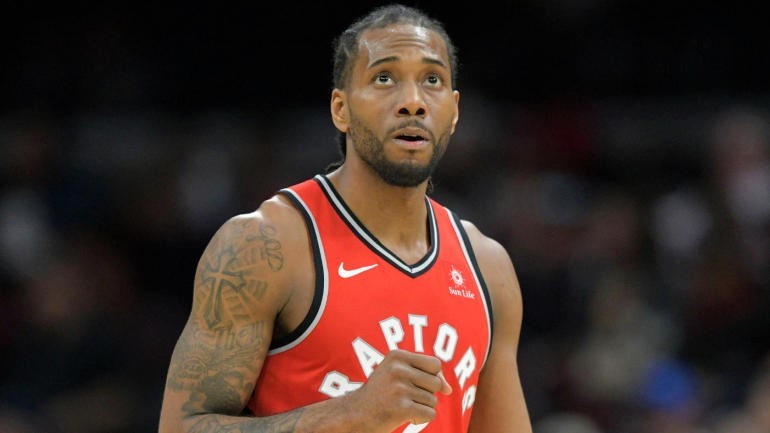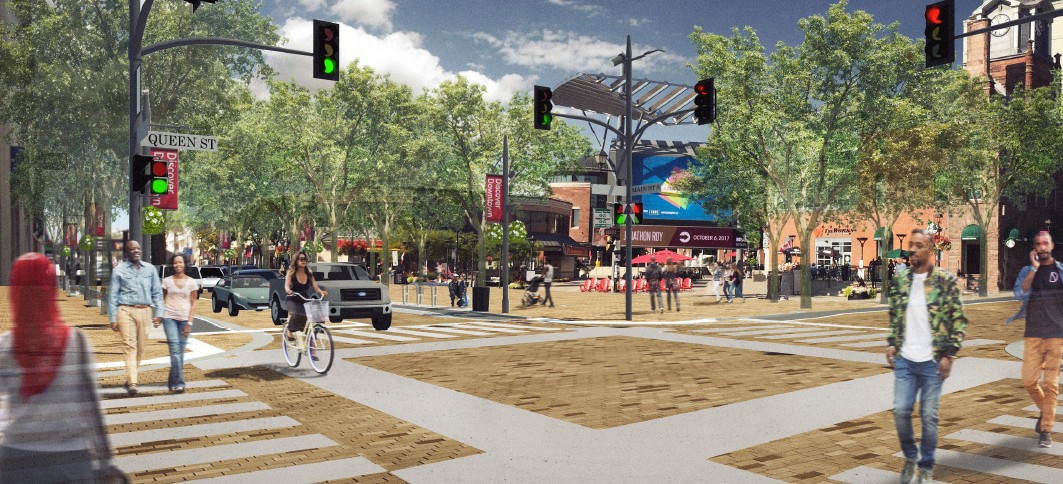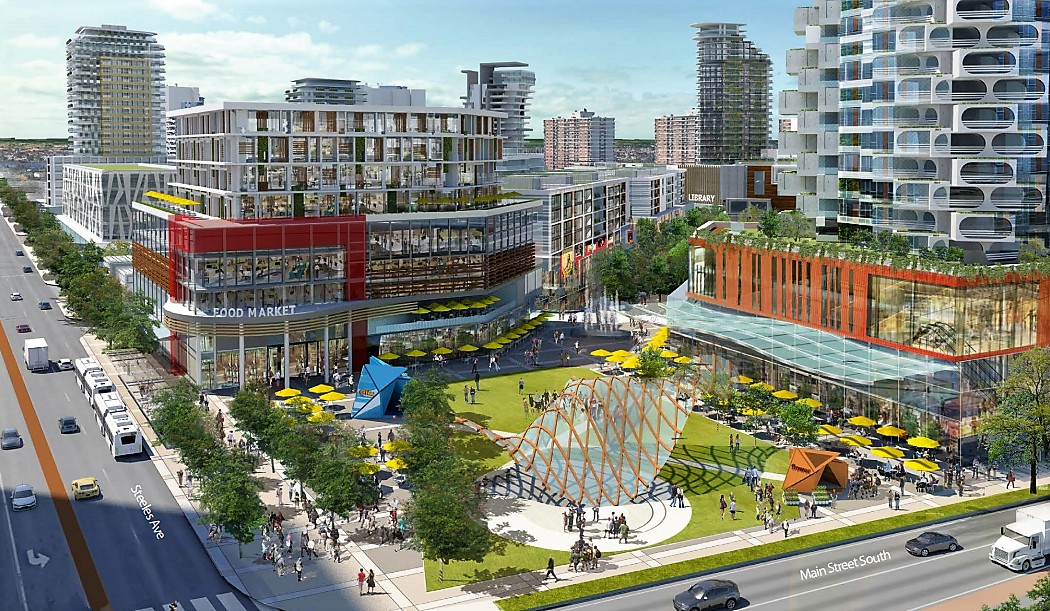
Our politicians and other leaders should take note of Masai Ujiri and Kawhi Leonard
Einstein said the definition of insanity is to do the same thing over and over again and expect a different result.
The most cryptic example was the western front in World War I. Generals from the two combatants – the Triple Entente and the Triple Alliance – continued to send wave upon wave of humanity over the top and into no man’s land only to see them mowed down almost instantaneously by machine gun fire. The battles of The Somme, Passchendaele, and Verdun weren’t battles at all, but abattoirs. The moral of the story: this was no way to wage war.
Fast-forward a century. Pro sports has become a metaphorical replacement for warfare. We’ve even embraced the lexicon. Games are battlefields. Coaches are generals, players foot soldiers.
Cue the camera and point it toward the Toronto Raptors – once a lousy NBA franchise that has over the past few years, become a very good one. The Raps won tons of games, filled the former Air Canada Centre to the brim night after night, but until its most recent experience, was mowed down in the NBA playoffs.
The team’s promise was ephemeral, a smoke screen, like so many companies led by managers happy with the status quo and terrified of change, even as they slowly sink into irrelevance.
The squad was particularly bedeviled by the Cleveland Cavaliers and the uber-talented LeBron James, the epitome of a superstar.
Yes, by every standard of measurement except one, the Raptors’ CEO Masai Ujiri was considered a success. The small problem of beating LeBron wasn’t small at all. It was a physical and psychological barrier.
Last summer, Ujiri had an epiphany or a meltdown. He decided his team wasn’t good enough; it needed new soldiers, a better general, someone who wouldn’t keep running sets the opposition knew were coming and isolation-heavy bailouts easily defended by elite, lengthy playoff specialists.
He fired Dwane Casey who would win coach of the year after guiding the team to a record 59 wins. He traded DeMar DeRozan for a broken-down forward who played only nine games the previous year because of a crippling quadriceps injury. Kawhi Leonard was literally shamed out of San Antonio and called a malingerer. Casey’s replacement was his little-known assistant Nick Nurse.
Some smart-alecky critics thought the Nurse hire was appropriate. The team would need one to take care of the ailing Leonard or staunch the bleeding after his team lost game after game. Some thought the Raps might even miss the playoffs, if the rookie coach and his injured mercenary couldn’t perform.
We know what happened. Leonard arose like Lazarus and was beyond good: he was a super scorer, a shut-down defender, and a quiet, inspirational leader. Nurse was a note-perfect coach, a revelation really. The other foot soldiers played their heads off in key roles, and in the end, they knocked off the defending champs, the Golden State Warriors to become the first-ever alpha team outside the U.S.. People who didn’t know the difference between a volleyball and basketball did a full buy-in. The entire country became Raptorized.
The moral of this story is multi-faceted: it’s super important to have a goal; be bold in your coaching and management decisions; and stop doing the same thing year after year and expect it to lead to a different result.
Getting to the core of the problem
It’s a beautiful late spring night in June and a small crowd of Brampton citizens gathered on the second floor of the Four Corners library branch at 65 Queen Street East. This Town Hall Meeting will discuss downtown enhancement plans, parks and recreational improvements, and pass on information about the province’s regional review on a new governance model.
All this has been trodden upon in the past, but Regional Councillor Martin Medeiros and City Councillor Jeff Bowman wanted to keep the small group well informed and get their feedback. City staffers laid out a Power Point presentation that included the scope of work for a new Mobility Hub, partnerships on educational opportunities with Sheridan College and Algoma University, and two new condos to be built near the downtown rail line. There were also updates on the city’s flood mitigation strategy – which “continues to move forward” – and information on the $160 million Innovation Centre which is being framed as a catalyst to revive the city core.

The Downtown Reimagined plan
It was a full presentation, and if one didn’t know better, painted a picture of a city on the ascendency, with a jazzy downtown that is a magnet for people and business interests – which it clearly is not.
The Reimagined plan to fix up the city’s badly decaying watermains below Main Street (and includes a new streetscaping plan above ground) is on hold due to its ever-increasing costs and unknown water flows below ground that city staff somehow failed to figure out for years. Flood mitigation is in the early stages and tied to plans for The Riverwalk, which is moving through the environmental assessment phase. The LRT extension into the downtown is still at the study stage, with options on the table, and even if it does hook up to the downtown rail station, there is still no two-way, all-day GO Train service. After being elected last year, the PCs at Queen’s Park put the boots to plans for a downtown Ryerson campus, and of course, a short wander down to the four corners shows many stores and restaurants have closed, including two long-time stalwarts, David Andrew Clothiers, and Joey’s, an eatery on Queen Street.
The positive vibes from the staff presentation of the future of the core, doesn’t seem to rhyme with the realities on the street.
Sure, there are stirrings that things will change soon. A $160 million Innovation Centre is a positive, and news came down this week that the city will exempt future office buildings from development charges. Ottawa and other private-sector partners are onboard for a $30 million Cyber-security initiative, and the city has embraced a forward-looking Foreign Development Investment (FDI) plan which will hopefully attract new businesses here from around the world.
But Brampton needs dynamic leadership to get it all done.
One of the most important draws for outside businesses looking to invest in a city is public transit, followed by livability. Employers and employees want a cool place offering a top-notch work-life balance. The idea is an ability to draw on the best talent available, according to a study by the Neptis Foundation. Its Growth Plan for the Greater Golden Horseshoe says companies want to settle in cities that have it all. The study identified downtown Toronto – with its good transit, and lively street life – as the place to be. That’s a dramatic shift from a couple decade ago when the movement of jobs was very much towards the suburbs, where land was cheap and parking was endless.
One of the study’s architects, Dr. Pamela Blais, once wrote a paper entitled ‘The Economics of Urban Form.’ She warned that a failure to finally accept the need for compact development will lead to future folly for cities infested with sprawl and gridlock. Brampton is the poster boy with one of the worst land-use mixes in the province. The city is drunk with single-family homes. It is currently launching a robust campaign to get provincial funding to fill its healthcare needs. That seems to send out mixed signals to the FDI crowd which is also attracted to places offering the best in healthcare services to potential employees.
It’s clear Brampton, much like the old Raptors, needs to come up with a winning game plan. It must be bold, focused, and driven by a sense of urgency. It must understand that everything is changing. A pattern called “employment density” now sees young professionals in almost every field flocking to super-cities that have it all, because they want it all, great transit, compact but aspirational housing, arts and culture, unique dining experiences, sports and recreation and nightlife. We can’t afford another four-year term on council that comes and ends with no major accomplishments – or doesn’t set the table for future success.
Flood mitigation is such an important issue, says Bowman, talking to The Pointer after the library presentation, “because everything feeds off of it.” He is frustrated by the slowness taken to fix what ails the city, and only wishes “I could take out a shovel myself and start digging.”
But the Ford government is withholding federal money earmarked for transit. The regional review threatens to change the very make-up of the city – will it remain in the region, link up with Mississauga, or go it alone? This, and the upcoming federal election, has left Brampton in a holding pattern – unable to push forward.
Ujiri’s boldness in dealing DeRozan and trading for his very own LeBron, forced the team to reimagine itself, and firm up its goals. Kawhi’s leadership was infectious, a game-changer, something our so-called leaders and managers in every circle can learn from. He doesn’t talk the talk. No lip-service. No cheerleading. He leads by example. You want to get something done, watch me. How many times had Raptors fans watched DeRozan, a talented scorer, stand and scowl after a shot clanged off the rim, or complain to the refs as the opponent streaked out in transition marauding through an outnumbered defence. Kawhi? How many times did we watch him hunt down his missed shot or one of his teammate’s like some scavenger desperate to eat, or see him get back on defence to frustrate a seemingly open shot or drive to the rim? Too many to count. No fanfare, no pounding his chest. Just get the job DONE.
Brampton already has a plan that has some clear goals: The 2040 Vision. This document is the result of massive feedback from the public. It has been called “aspirational” by some, but why? 2040 talks about multiple downtowns, great transit, flood mitigation, a walkable city-centre, the whole shebang. It’s about a city that is clean and green and sports business-friendly hubs and is both livable and exciting.
How about re-naming it 2025 or 2030 and dropping the “vision” part? Let’s get on with it!
Should Brampton always depend on government funding to kick-start an ultimate re-build? The private and public-sector partnerships that spawned forests of cranes in downtown Toronto and now Mississauga, are driving a bold new initiative called “complete communities.” The urbanist Ken Greenberg was behind the plan to turn the underside of Toronto’s Gardiner Expressway into a destination place for people living in the city’s south end. Putting in a giant skating rink was only one of the ways this former scrub land has been revitalized.
These changes are very do-able here.
An example of a complete community is ‘The Well’, another Toronto development that includes retail, office towers and 1,800 units – a true neighbourhood. Greenberg admits that many cities, including Toronto are playing “catch-up” when it comes to re-doing their personalities, making them more sophisticated and closing the infrastructure deficits. But he foresees ‘The Well’ as a connector to the futuristic Rail Deck Park that could put a massive patch of green over the vast rail lands that divide the province’s capital from its own lakefront.
The Well is being driven by developer RioCan REIT, Allied Properties REIT, Diamond Corp. Tridel, and Woodbourne Canada Management Inc. This 7½-acre site, which borders Wellington, Spadina and Front Street, is perhaps the way future cities will be built. It’s an open, vibrant, and mixed-use community where people can live, work, and shop. The marketers say it will “become a gathering place, reflecting the heart and soul of Toronto, inspiring us and improving our quality of life.”
Our downtown continues to be stymied by a need for flood mitigation and the absence of an LRT. But Shoppers World (Steeles Avenue and Main Street South), isn't. This is where the new LRT line from Mississauga connects. It’s already a transportation hub. Can it become our second downtown?

A rendering of the Shoppers World Brampton corner in the 2040 Vision document
RioCan has a big land stake there with its 700,000 square foot Shoppers World complex, and has stated its eagerness to transform it into a community. About two weeks ago, Stuart Craig, the firm’s vice-president of planning and development, made a presentation at Alderlea mansion.
Canada’s largest real estate investment trust owns and manages this country’s largest portfolio of shopping centres. But the growth of parcel-delivery has changed the business model, and RioCan is cognizant of the fact a large percentage of malls are scheduled to close in the near future, or will be reworked into retail, residential and office hubs – complete communities. This is the future of Shoppers World.
Craig got his planning degree at the University of Waterloo and moved into the government sector where he spent a year at the Town of Whitby before spending nine more in Ajax. He knows how cities operate, and what they need to draw in investment.
The three communities that make up the bulk of Waterloo Region – Kitchener, Waterloo and Cambridge – have the kind of transit Brampton residents can only dream about.
ION is an integrated mass transit network currently in the testing phase and will operate as part of the Grand River Transit system, supplementing and partially replacing much of the express bus service. The last Brampton council rejected hundreds of millions in provincial funding for the LRT extension into our downtown under a Liberal government route that it somehow refused to deviate from. That money was shifted to communities like Waterloo, or Hamilton. Building a spine line in a community is crucial to its overall transit success, and because of that spine, cities can re-route buses to feed into it.
In Ottawa, RioCan hopes to “transform” the Westgate community into a series of mixed-use towers — five in all — that would include commercial outlets and 1,100 residential units. According to the Ottawa Citizen, Craig told a public meeting that the city’s “LRT will be the catalyst” for any future development. The Ottawa Business Journal notes that the $2.1-billion infrastructure project has pumped hundreds of millions of dollars into the local economy through direct employment and contracts to local suppliers and businesses serving it and its construction teams. That’s not counting the LRT’s ability to spur on future riches. “It’s [LRT] on the mind of every single developer and owner when it comes to either purchasing or developing assets in Ottawa,” said Warren Wilkinson, managing director of the Ottawa office of real estate firm Colliers International.
The radical transformation of a city needs a definitive game plan, and councillors on a war footing – ready to do battle.
There’s no telling when or if our Reimagined project will get funding to complete the fixes needed below and on our streets. The Riverwalk is a great way to get flood mitigation and enhance our downtown – but it’s years away from completion. And if there’s a change in leadership in Ottawa in October, will it ever get done?
The recent city-led campaign to get our fair share (#Fair Deal for Brampton) makes us look beggarly and sends out a mixed signal to foreign investors not to come here. Brampton is incomplete, in need of help.
Brampton has to show more self-belief, even strut a bit. Yes, we have lots to sell to investors: we’re one of the youngest, most diverse, and best-educated communities in Canada. We have a rich portfolio of developable land, and we’re close to Pearson International Airport.
The small gathering at the Four Corners Library on Tuesday night got a sugar high from some of the advances that city staff were pointing out in their presentations. But Bowman and Medeiros and Mayor Patrick Brown and the rest of the councillors should know that the clock is ticking on their four-year mandate, and if this city doesn't score some big wins soon, it will be another mandate wasted.
Raptors’ management wasn’t satisfied with a good regular season record and an early exit from the playoffs. They felt the urgency to act. Having a goal doesn’t always end up with a trophy and a parade in front of 1.5 million people with the NBA trophy. There are a ton of things that can go wrong along the way. But there is always the possibility that it can go right.
Ujiri took a chance on a player who had already won and thought he might like to do it again. There are no guarantees that Kawhi will be back next year. But that’s okay, he has already left something very valuable behind. Not just a trophy, but a winning attitude. It’s way past time Brampton ‘Raptorized' its way of thinking.
Submit a correction about this story


